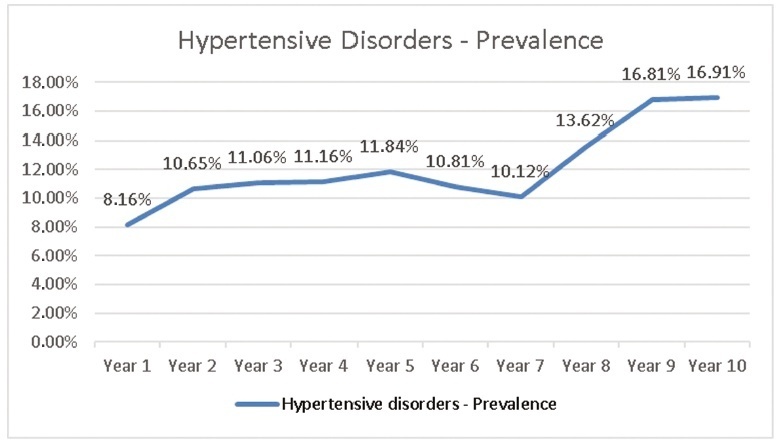Summary
Revista Brasileira de Ginecologia e Obstetrícia. 2020;42(11):739-745
To evaluate factors associated with anxiety and the effect of simulation-based training (SBT) on student anxiety, self-confidence and learning satisfaction in relation to pelvic and breast examination.
A longitudinal study was conducted with 4th year medical students at the Universidade José do Rosário Vellano. A 12-item, self-report questionnaire on student anxiety at performing gynecological examinations was applied before and after SBT, with answers being given on a Likert-type scale. After training, the self-confidence levels and satisfaction of the students related to the learning process were also evaluated.
Eighty students with a mean age of 24.1 ± 4.2 years were included in the study. Of these, 62.5% were women. Pre-SBT evaluation showed that students were more anxious at performing a pelvic examination than a breast examination (2.4 ± 1.0 versus 1.7 ± 0.8, respectively; p < 0.001). The primary reason for anxiety regarding both pelvic and breast examination was fear of hurting the patient. SBT significantly reduced student anxiety (2.0 ± 0.8 versus 1.5 ± 0.5, respectively; p < 0.001). The satisfaction and self-confidence of the students were found to be high (6.8 ± 0.3 and 6.0 ± 0.9, respectively), with no difference between genders.
The use of SBT in teaching students to perform pelvic and breast examinations resulted in reduced anxiety and increased self-confidence in a group of medical students of both genders, with high levels of satisfaction in relation to the training.
Summary
Revista Brasileira de Ginecologia e Obstetrícia. 2020;42(11):731-738
Adolescence is characterized by significant biological and psychological changes. During this time, the increased production of androgens leads to increased sexual behavior, and this may contribute to early initiation of sexual activity. The objectives of the present cross-sectional study of adolescents enrolled in state schools in the city of Ribeirão Preto, state of São Paulo, Brazil, were to determine the average age at the first sexual intercourse (sexarche), the average number of sexual partners, and the frequency of contraceptive and condom use. Information on the age at sexarche, number of sexual partners, use of different contraceptive methods, and use of condoms were obtained using a semistructured questionnaire. Quantitative variables are expressed as means and standard deviations (SDs), and qualitative variables as absolute and relative frequencies. The chi-squared test was used for comparisons of qualitative variables, and the Student t-test for comparisons of continuous variables. All statistical analyses were performed using SAS (version 9.4, North Carolina State University, USA). We evaluated 202 students who answered the questionnaire, 69 males (36.36%) and 133 females (63.64%). The age at sexarche for men ranged from 7 to 18 years old, and for women from 7 to 17 years old. Forty-eight girls (36.01%) and 21 boys (30.43%) were in the first year of high school, 66.94% of adolescents reported sexual intercourse, and 56.25% used a condom during the first sexual intercourse. A total of 36.72% of students said they had safe sex most of the time, and 83.59% said that the first sexual intercourse happened because they “had a crush on” the other person.
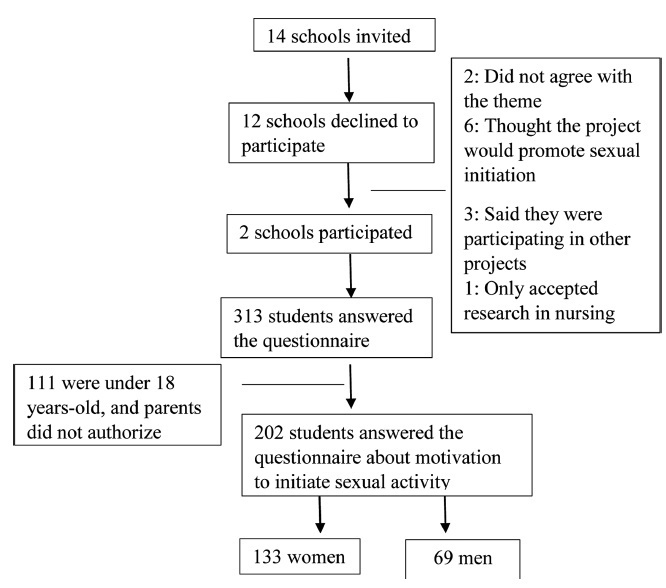
Summary
Revista Brasileira de Ginecologia e Obstetrícia. 2020;42(11):726-730
The objective of the present study is to observe the frequency and severity of urinary symptoms in women with breast cancer (BC) being treated with oral hormone therapy, associating them to drug adherence.
The participants were interviewed once from June to October 2016. The evaluation of urinary symptoms was performed by two questionnaires: International Consultation on Incontinence Questionnaire - Short Form (ICIQ-SF) and International Consultation on Incontinence Questionnaire Overactive Bladder Module (ICIQ-OAB). Adherence was evaluated by the Morisky-Green method. Statistical analysis was performed by the Mann-Whitney test, linear regression, and Spearman correlation.
Fifty-eight women were interviewed: 42 treated with tamoxifen and 16 with aromatase inhibitor. Twenty-seven women (46.5%) presented urinary incontinence symptoms and 15 (25.8%) presented stress urinary incontinence (SUI). Fourteen (24.1%) women had symptoms of overactive bladder (OAB). There was no statistical difference in symptoms between both treatments and duration of treatments. Higher scores in the ICIQ-SF questionnaire were associated with low/medium adherence and advanced age. Higher scores in the ICIQ-OAB questionnaire were associated with low/medium adherence.
The present study showed a high prevalence of urinary symptoms, such as urinary incontinence and OAB, associated with low/medium adherence and older age in women with BC being treated with oral hormone therapy. Health professionals should be alert to these symptoms since it could influence life quality and adherence to treatment.
Summary
Revista Brasileira de Ginecologia e Obstetrícia. 2020;42(11):717-725
To compare the type of management (active versus expectant) for preterm premature rupture of membranes (PPROM) between 34 and 36 + 6 weeks of gestation and the associated adverse perinatal outcomes in 2 tertiary hospitals in the southeast of Brazil.
In the present retrospective cohort study, data were obtained by reviewing the medical records of patients admitted to two tertiary centers with different protocols for PPROM management. The participants were divided into two groups based on PPROM management: group I (active) and group II (expectant). For statistical analysis, the Student t-test, the chi-squared test, and binary logistic regression were used.
Of the 118 participants included, 78 underwent active (group I) and 40 expectant management (group II). Compared with group II, group I had significantly lower mean amniotic fluid index (5.5 versus 11.3 cm, p = 0.002), polymerase chain reaction at admission (1.5 versus 5.2 mg/dl, p = 0.002), time of prophylactic antibiotics (5.4 versus 18.4 hours, p < 0.001), latency time (20.9 versus 33.6 hours, p = 0.001), and gestational age at delivery (36.5 versus 37.2 weeks, p = 0.025). There were no significant associations between the groups and the presence of adverse perinatal outcomes. Gestational age at diagnosis was the only significant predictor of adverse composite outcome (x2 [1] = 3.1, p = 0.0001, R2 Nagelkerke = 0.138).
There was no association between active versus expectant management in pregnant women with PPROM between 34 and 36 + 6 weeks of gestation and adverse perinatal outcomes.
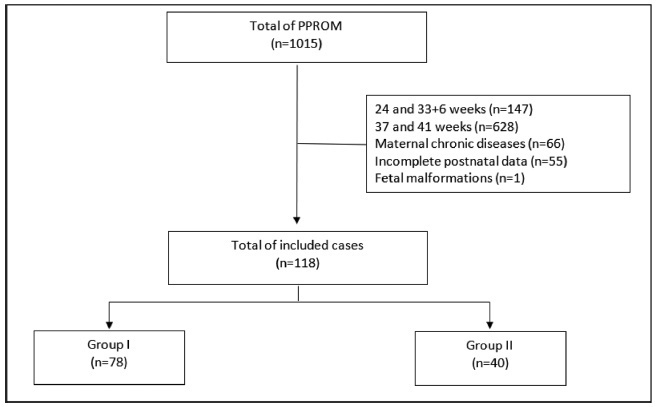
Summary
Revista Brasileira de Ginecologia e Obstetrícia. 2020;42(11):712-716
To determine whether there was any difference in neonatal and maternal outcomes between breech vaginal delivery and cephalic vaginal delivery.
A retrospective, case-control study was conducted between January 2015 and December 2017 in a Portuguese hospital. A total of 26 cases of breech vaginal delivery were considered eligible and 52 pregnant women formed the control group.
Induced labor was more frequent in the breech vaginal delivery group (46% versus 21%, p = 0.022). Episiotomy was more common in the breech vaginal delivery group (80% versus 52%, p = 0.014), and one woman had a 3rd degree perineal laceration. Newborns in the study group had a lower birthweight (2,805 g versus 3,177 g, p < 0.001). There was no significant difference in the neonatal outcomes.
The present study showed that breech vaginal delivery at term compared with cephalic presentation was not associated with significant differences in neonatal and maternal morbidity. It also suggests that breech vaginal delivery remains a safe option under strict selection criteria and in the presence of an experienced obstetrician.
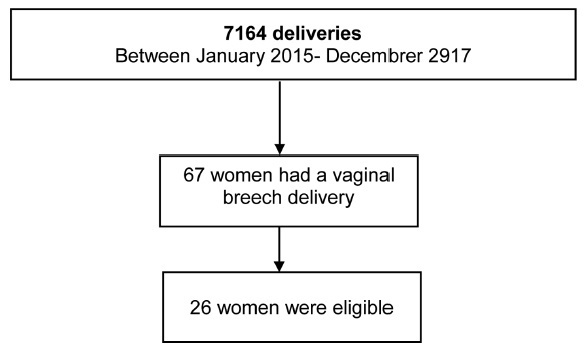
Summary
Revista Brasileira de Ginecologia e Obstetrícia. 2020;42(11):705-711
To determine pregnancy outcomes in women with systemic lupus erythematosus (SLE) who were treated with hydroxychloroquine in a tertiary center.
A retrospective study involving pregnant women with SLE who had antenatal follow-up and delivery in between 1 January 2007 and 1 January 2017. All participants were retrospectively enrolled and categorized into two groups based on hydroxychloroquine treatment during pregnancy.
There were 82 pregnancies included with 47 (57.3%) in the hydroxychloroquine group and 35 (42.7%) in the non-hydroxychloroquine group. Amongst hydroxychloroquine users, there were significantly more pregnancies with musculoskeletal involvement (p = 0.03), heavier mean neonatal birthweight (p = 0.02), and prolonged duration of pregnancy (p = 0.001). In non-hydroxychloroquine patients, there were significantly more recurrent miscarriages (p = 0.003), incidence of hypertension (p = 0.01) and gestational diabetes mellitus (p = 0.01) and concurrent medical illness (p = 0.005). Hydroxychloroquine use during pregnancy was protective against hypertension (p = 0.001), and the gestational age at delivery had significant effect on the neonatal birthweight (p = 0.001). However, duration of the disease had a significant negative effect on the neonatal birthweight (p = 0.016).
Hydroxychloroquine enhanced better neonatal outcomes and reduced adverse pregnancy outcomes and antenatal complications such as hypertension and diabetes.
Summary
Revista Brasileira de Ginecologia e Obstetrícia. 2020;42(11):697-704
Recent observations support the hypothesis that an imbalance between angiogenic factors has a fundamental role in the pathogenesis of pre-eclampsia and is responsible for the clinical manifestations of the disease. The goal of the present study was to evaluate the sensitivity, specificity, and the best accuracy level of Soluble fms-like tyrosine kinase-1 (sFlt-1), placental growth factor (PlGF), and sFlt-1/PlGF ratio in maternal serum and protein/creatinine ratio in urine sample to define the best cutoff point of these tests to discriminate between the patients with gestational hypertension and the patients with pre-eclampsia, to evaluate the possibility of using them as diagnostic methods.
A prospective longitudinal study was performed, and blood samples were collected from 95 pregnant patients with hypertension to measure serum concentrations of biomarkers sFlt-1 and PlGF. Urine samples were collected for protein screening. Significance was set as p < 0.05.
The sFlt-1/PlGF ratio demonstrated a sensitivity of 57.5% and a specificity of 60% using 50.4 as a cutoff point. The test that showed the best accuracy in the diagnosis of pre-eclampsia was protein/creatinine ratio, with a sensitivity of 78.9% and a specificity of 70% using 0.4 as a cutoff point and showing an area under the receiver operating characteristic curve of 0.80 (p < 0.001).
No studied laboratory test proved to be fairly accurate for the diagnosis of pre-eclampsia, except for the protein/creatinine ratio. The evidence is insufficient to recommend biomarkers sFlt-1 and PlGF to be used for the diagnosis of pre-eclampsia.
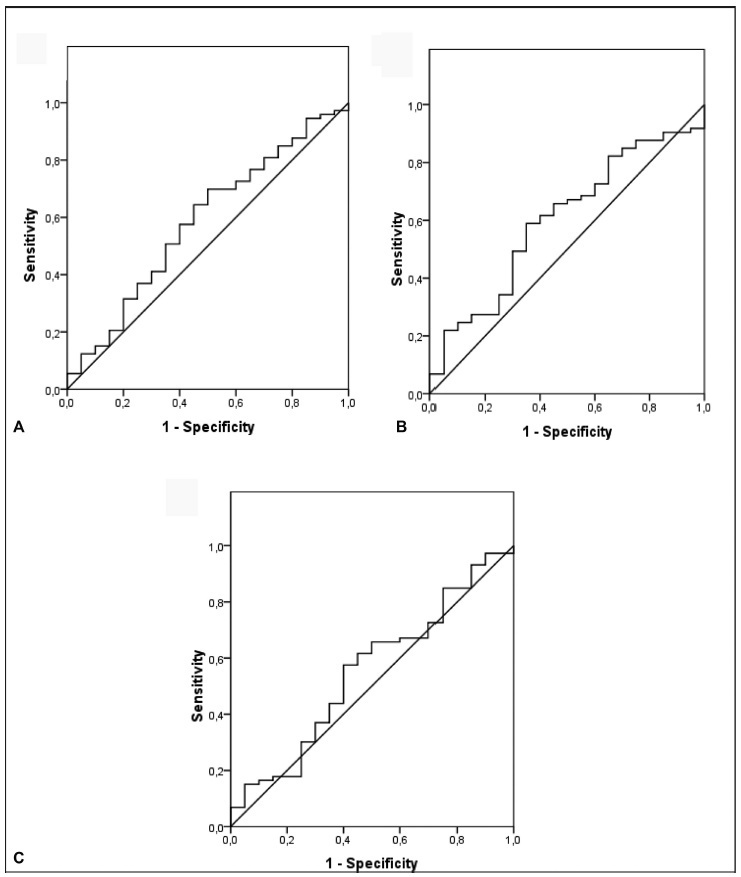
Summary
Revista Brasileira de Ginecologia e Obstetrícia. 2020;42(11):690-696
To evaluate the prevalence of hypertensive disorders, perinatal outcomes (preterm infants, low birthweight infants and Apgar score < 7 at the 5th minute and fetal deaths) and the cesarean rates in pregnant women hospitalized for delivery at the Maternidade Hilda Brandão da Santa Casa de Belo Horizonte, Belo Horizonte, state of Minas Gerais, Brazil, from March 1, 2008 to February 28, 2018.
A case-control study was performed, and the groups selected for comparison were those of pregnant women with and without hypertensive disorders. Out of the 36,724 women, 4,464 were diagnosed with hypertensive disorders and 32,260 did not present hypertensive disorders
The prevalence of hypertensive disorders was 12.16%; the perinatal outcomes and cesarean rates between the 2 groups with and without hypertensive disorders were: preterm infants (21.70% versus 9.66%, odds ratio [OR] 2.59, 95% confidence interval [CI], 2.40-2.80, p < 0.001); low birthweight infants (24.48% versus 10.56%; OR 2.75; 95% CI, 2.55-2.96; p < 0.001); Apgar score < 7 at the 5th minute (1.40% versus 1.10%; OR 1.27; 95% CI, 0.97-1.67; p = 0.84); dead fetuses diagnosed prior to delivery (1.90% versus 0.91%; OR 2.12; 95% CI, 1.67-2.70; p < 0.001); cesarean rates (60.22% versus 31.21%; OR 3.34; 95% CI, 3.14-3.55; p < 0.001).
Hypertensive disorders are associated with higher rates of cesarean deliveries and higher risk of preterm infants, low birthweight infants and a higher risk of fetal deaths.
